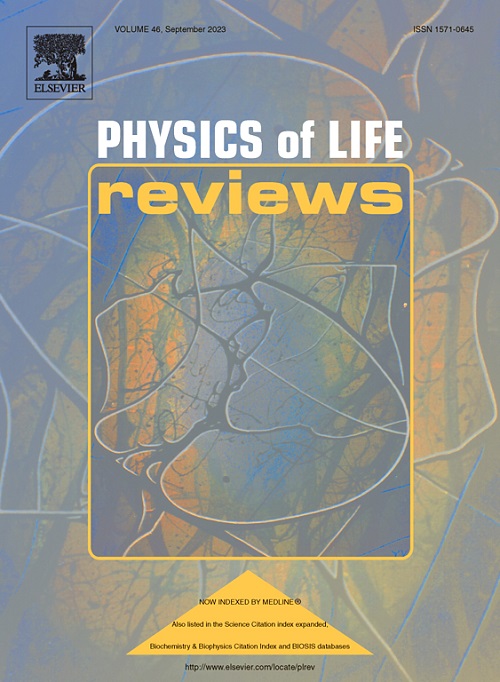Can arts-based interventions improve health? A conceptual and methodological critique
IF 14.3
1区 生物学
Q1 BIOLOGY
引用次数: 0
Abstract
Can art improve health and wellbeing? The claim that there is strong evidence that engaging with art ameliorates symptoms of mental and physical disorders and increases wellbeing is gaining acceptance among researchers and clinicians. This claim deserves thorough scrutiny, as it is used to justify a broad range of arts-based clinical interventions and health policies. Here we show that the evidence cited in favor of the efficacy of arts-based interventions is far weaker than it is claimed to be. First, we examined the methodological and statistical quality of studies that have been cited as proof for the efficacy of arts-based interventions. This analysis found that many of these studies lack key clinical trial features, such as defining the therapeutic agent, randomizing group assignment, controlling for patient or researcher allegiance, controlling for the effects of other concurrent interventions and medications, comparing art-based interventions to other kinds of interventions, or conducting and reporting statistical analyses appropriately. Second, in a broader examination of experiments on arts-based interventions, we looked for the experimental designs that would actually allow demonstrating that the putative health benefits owe to the effect of art. This analysis revealed that (i) most studies fail to define what art is, making it impossible to compare the effects of “art” and “non-art” stimuli and activities on health and wellbeing; (ii) fail to demonstrate that art stimuli and activities elicit a distinct class of art-induced physiological processes capable of modulating the cause of targeted disorders; (iii) and fail to manipulate neural processes believed to be mechanisms of action that could prove that arts-based interventions directly affect the etiology of disorders. These methodological weaknesses and inappropriate experimental designs cast serious doubt on claims that engaging with art can induce physiological changes that improve health and wellbeing. We discuss why arts-based interventions have neglected these problems and the ethical implications for patients who are treated with them.
基于艺术的干预措施能改善健康吗?一个概念和方法上的批判
艺术能增进健康和幸福吗?有强有力的证据表明,参与艺术可以改善精神和身体疾病的症状,并增加幸福感,这一说法正在得到研究人员和临床医生的认可。这一说法值得彻底审查,因为它被用来为广泛的基于艺术的临床干预和卫生政策辩护。在这里,我们表明,支持以艺术为基础的干预措施的有效性的证据远比它声称的要弱。首先,我们检查了被引用作为艺术干预有效性证据的研究的方法和统计质量。该分析发现,许多这些研究缺乏关键的临床试验特征,例如确定治疗剂,随机分组分配,控制患者或研究人员的忠诚,控制其他并发干预和药物的影响,比较基于艺术的干预与其他类型的干预,或适当地进行和报告统计分析。其次,在对以艺术为基础的干预的实验进行更广泛的检查时,我们寻找的实验设计实际上可以证明假定的健康益处归功于艺术的效果。这一分析表明:(1)大多数研究未能定义什么是艺术,因此无法比较“艺术”和“非艺术”刺激和活动对健康和福祉的影响;(ii)未能证明艺术刺激和活动引发了一类独特的艺术诱导生理过程,能够调节目标疾病的原因;(iii)并且不能操纵被认为是可以证明基于艺术的干预直接影响疾病病因的作用机制的神经过程。这些方法上的弱点和不适当的实验设计,使人们对参与艺术可以引起改善健康和幸福的生理变化的说法产生了严重的怀疑。我们讨论了为什么以艺术为基础的干预忽视了这些问题,以及对接受治疗的患者的伦理影响。
本文章由计算机程序翻译,如有差异,请以英文原文为准。
求助全文
约1分钟内获得全文
求助全文
来源期刊

Physics of Life Reviews
生物-生物物理
CiteScore
20.30
自引率
14.50%
发文量
52
审稿时长
8 days
期刊介绍:
Physics of Life Reviews, published quarterly, is an international journal dedicated to review articles on the physics of living systems, complex phenomena in biological systems, and related fields including artificial life, robotics, mathematical bio-semiotics, and artificial intelligent systems. Serving as a unifying force across disciplines, the journal explores living systems comprehensively—from molecules to populations, genetics to mind, and artificial systems modeling these phenomena. Inviting reviews from actively engaged researchers, the journal seeks broad, critical, and accessible contributions that address recent progress and sometimes controversial accounts in the field.
 求助内容:
求助内容: 应助结果提醒方式:
应助结果提醒方式:


